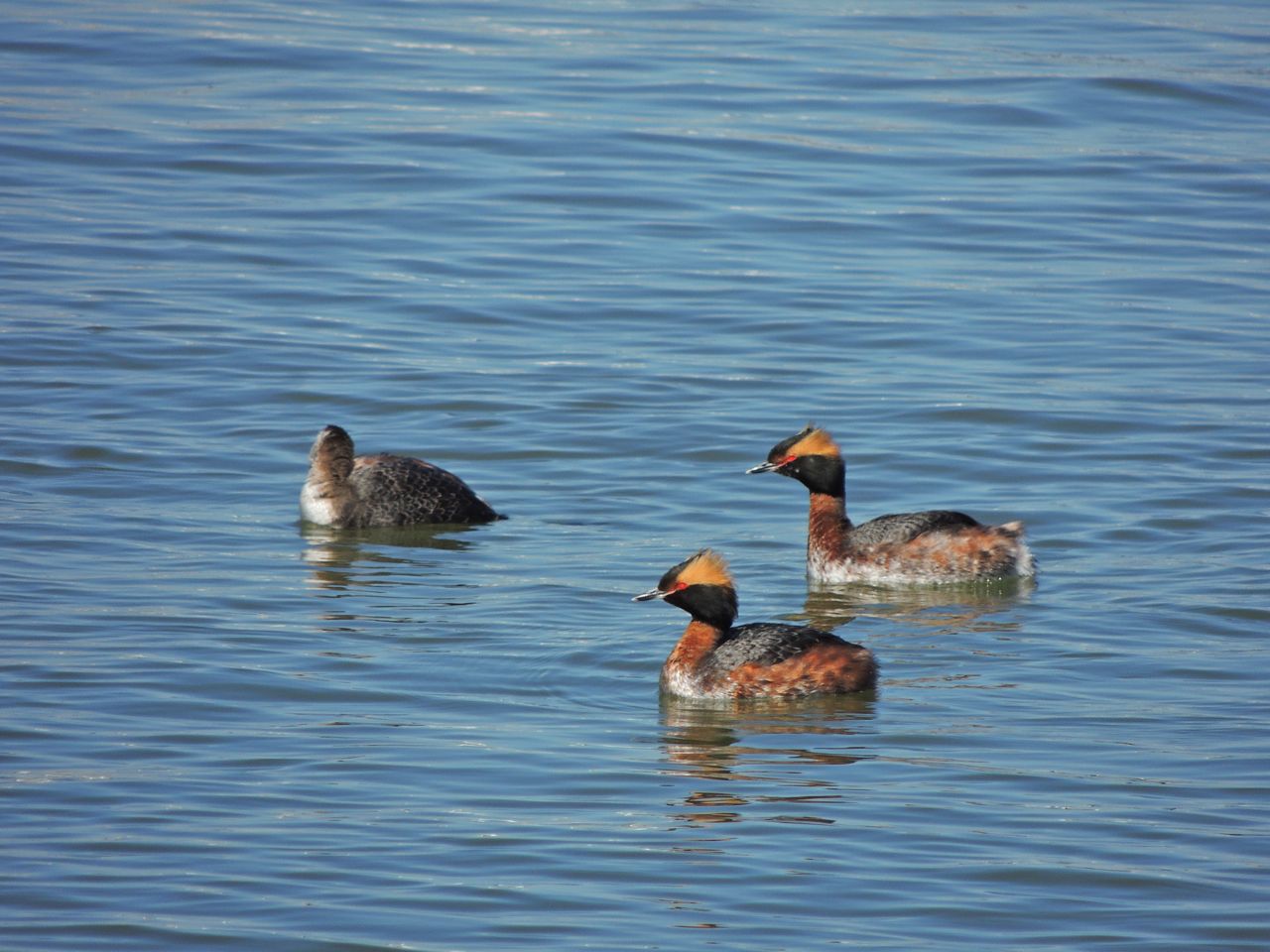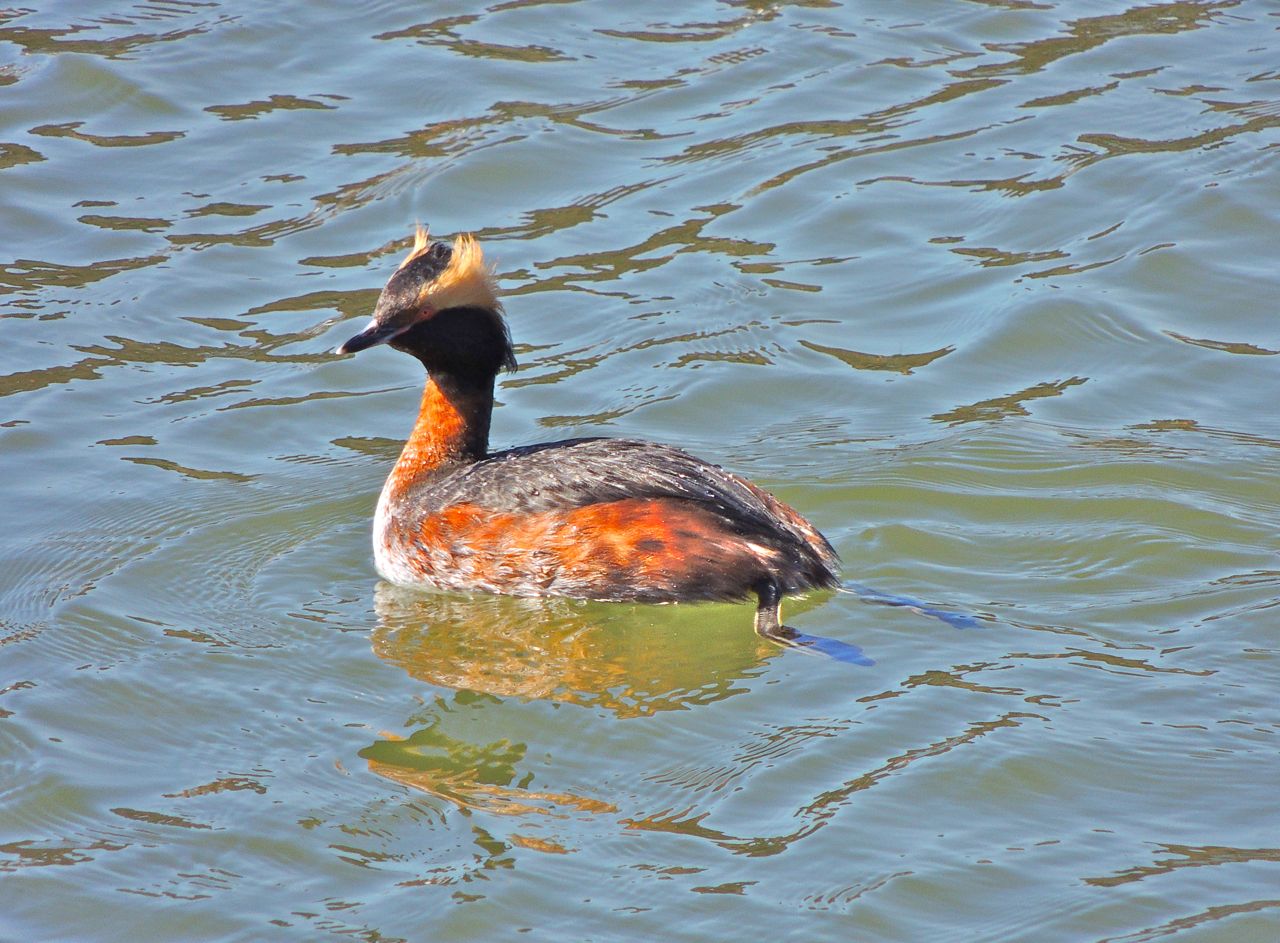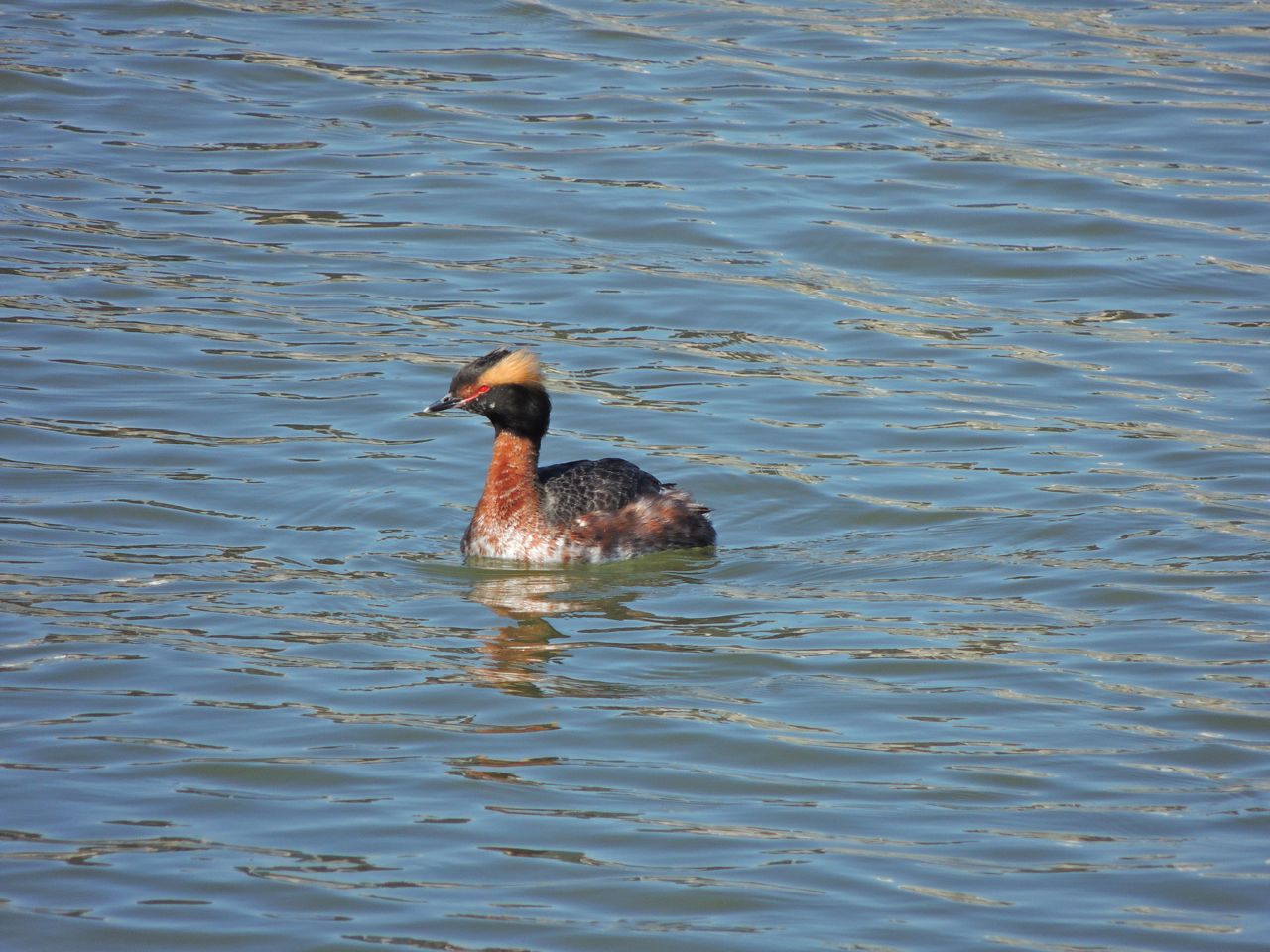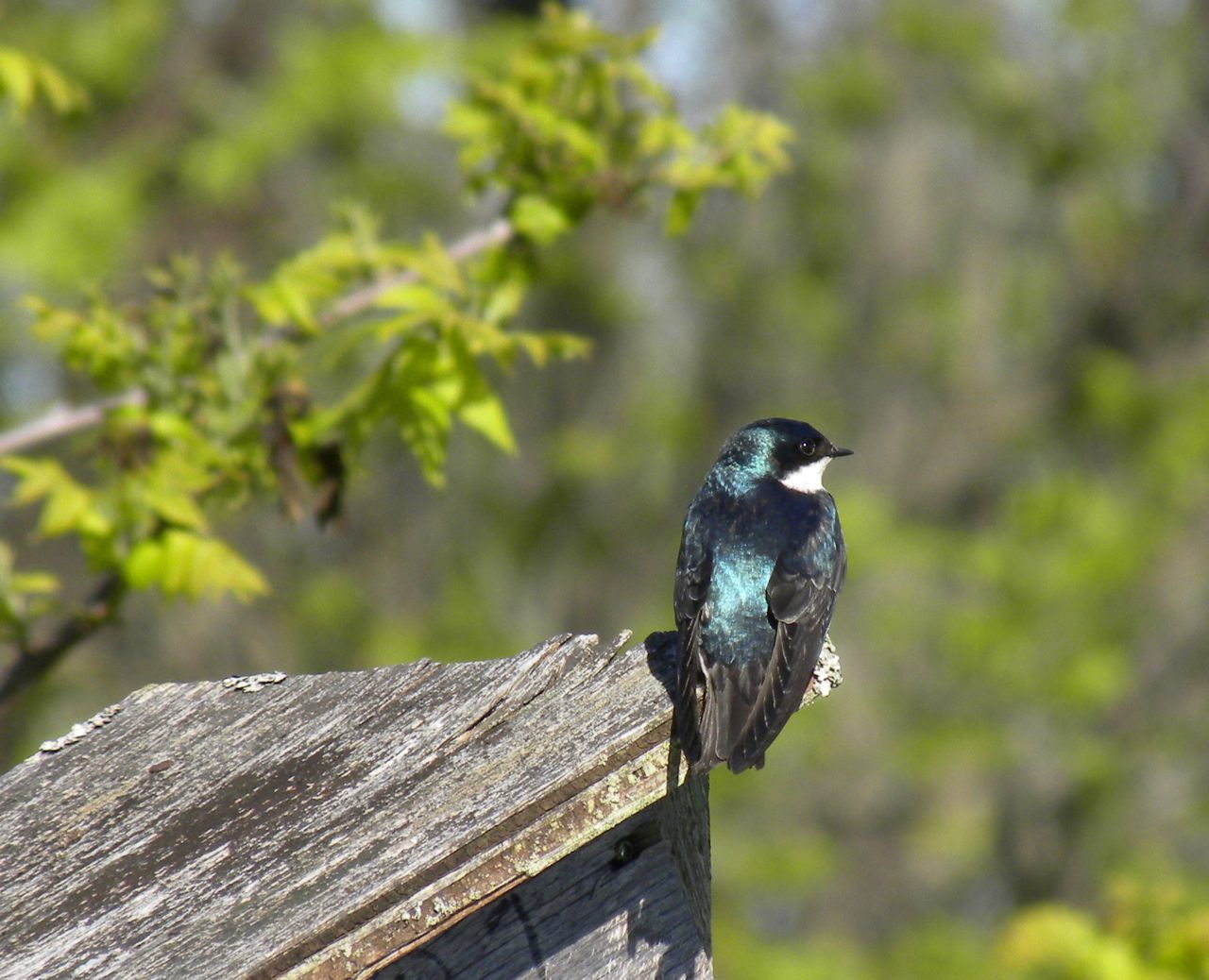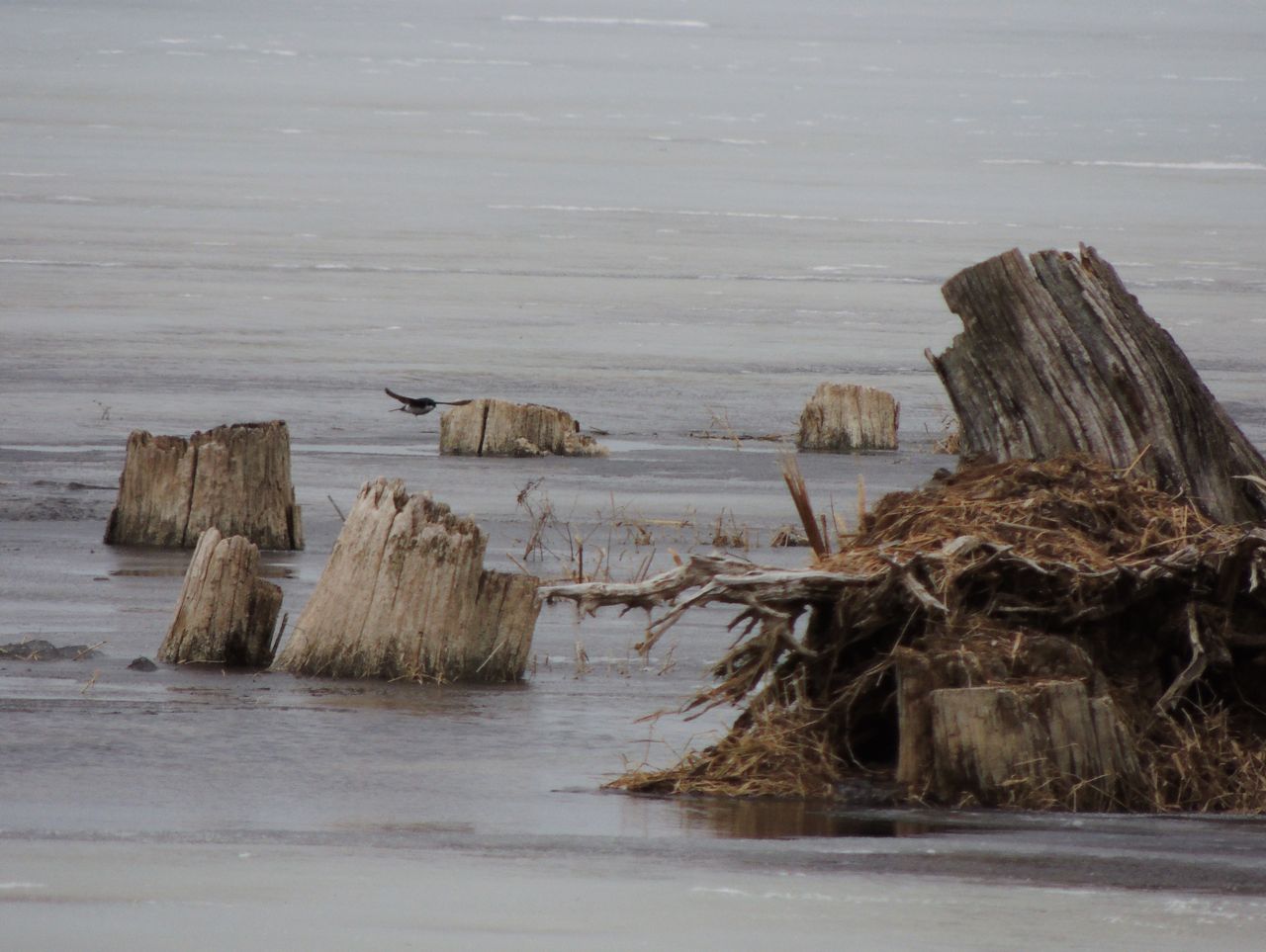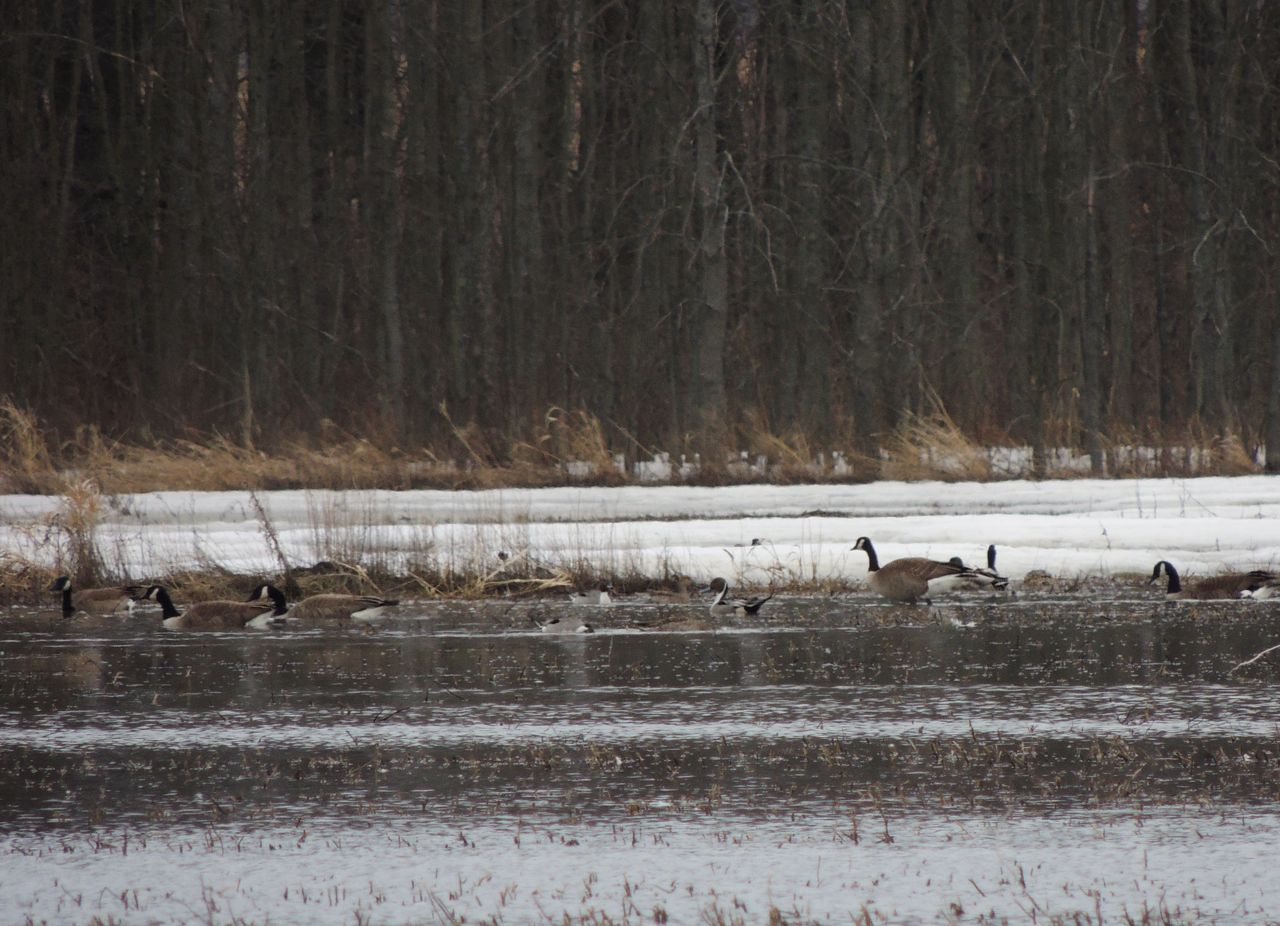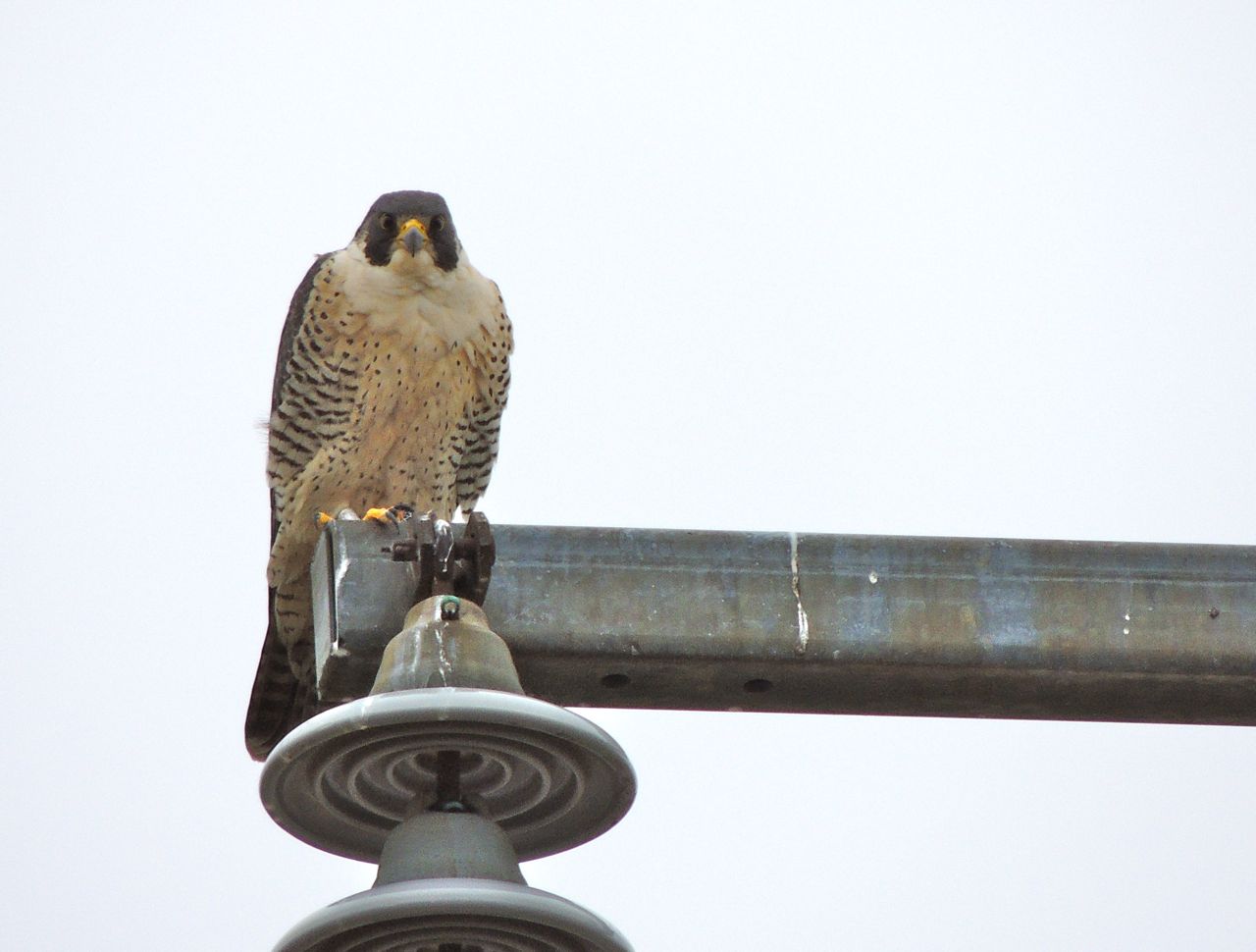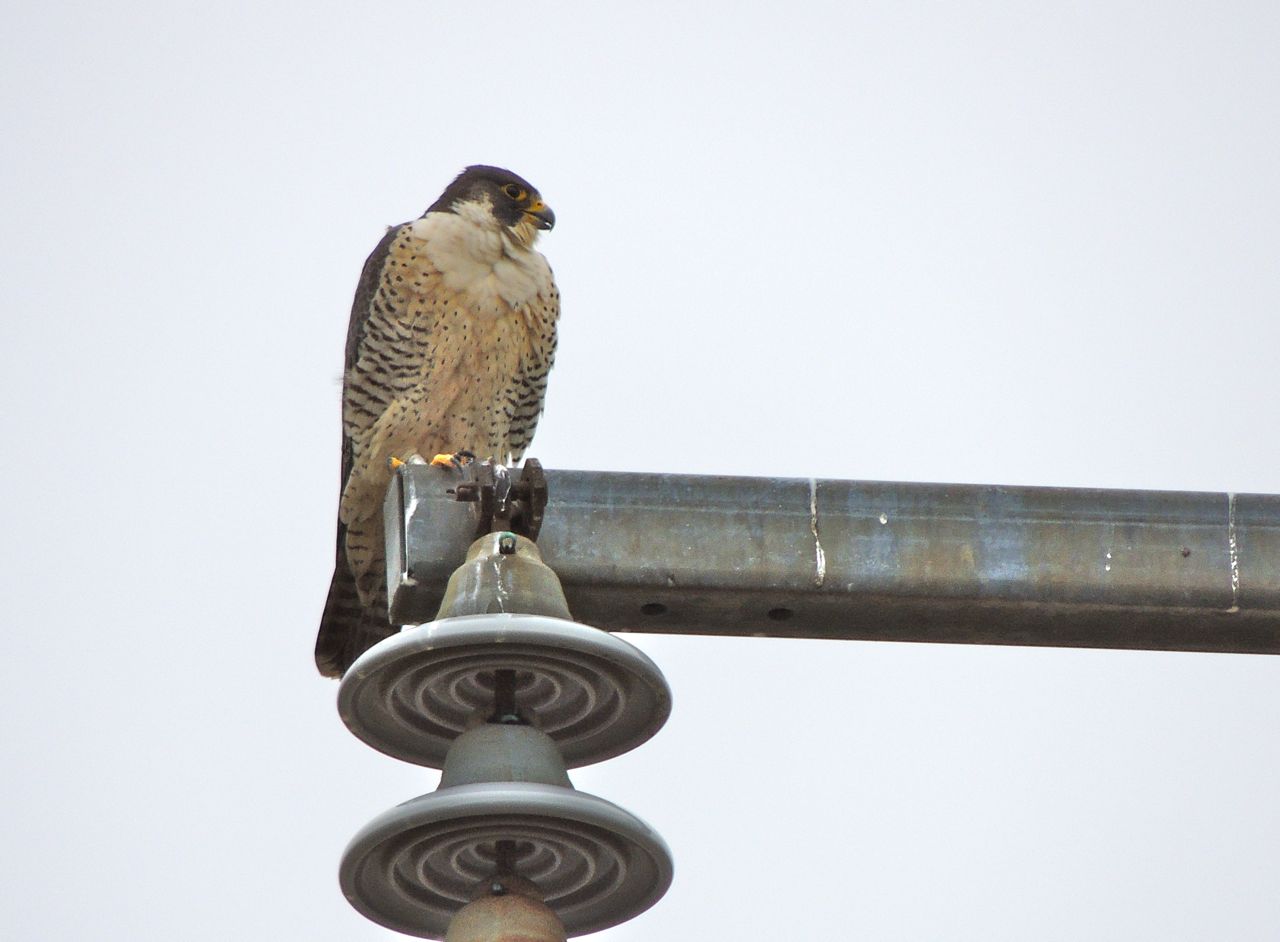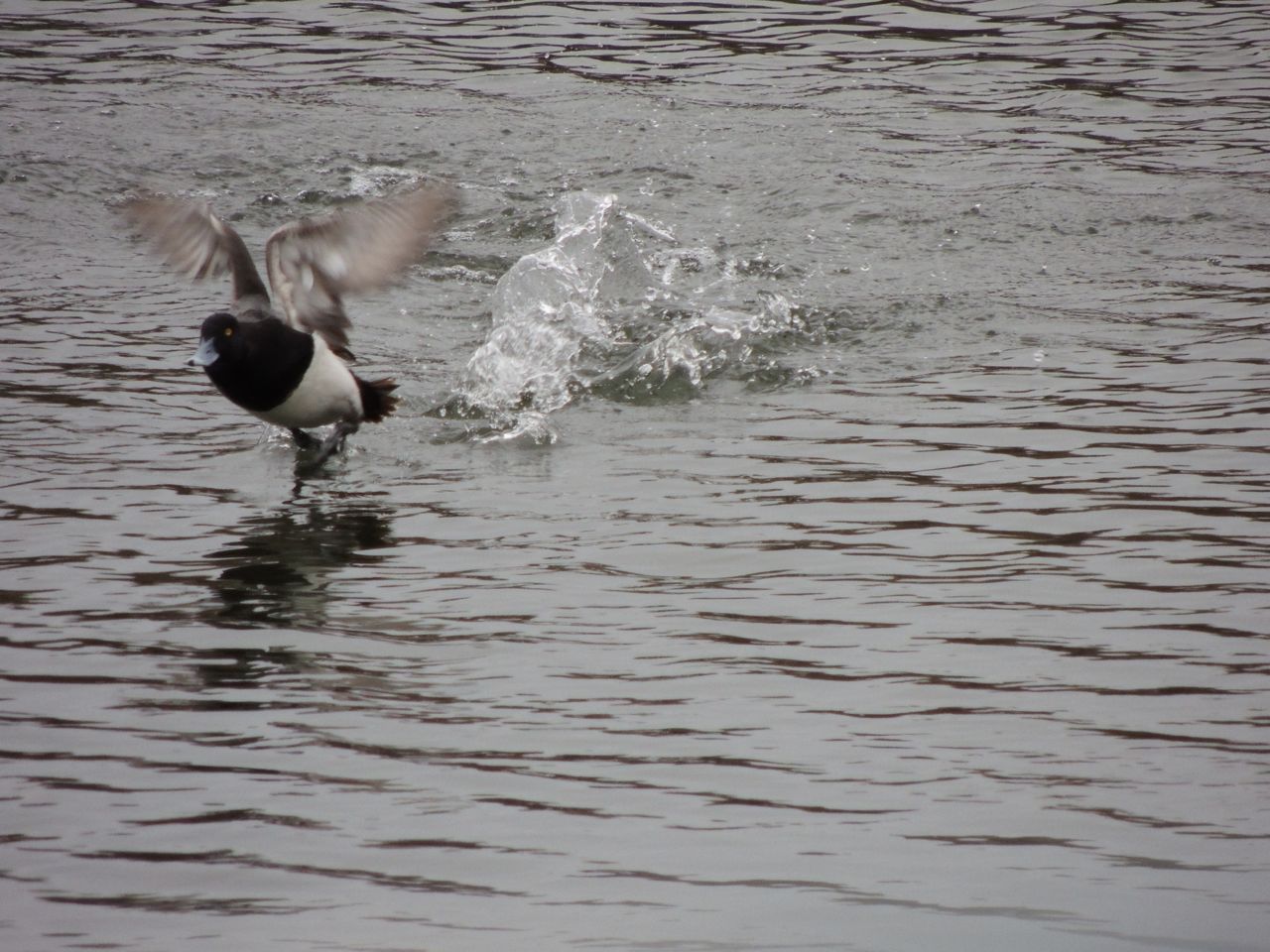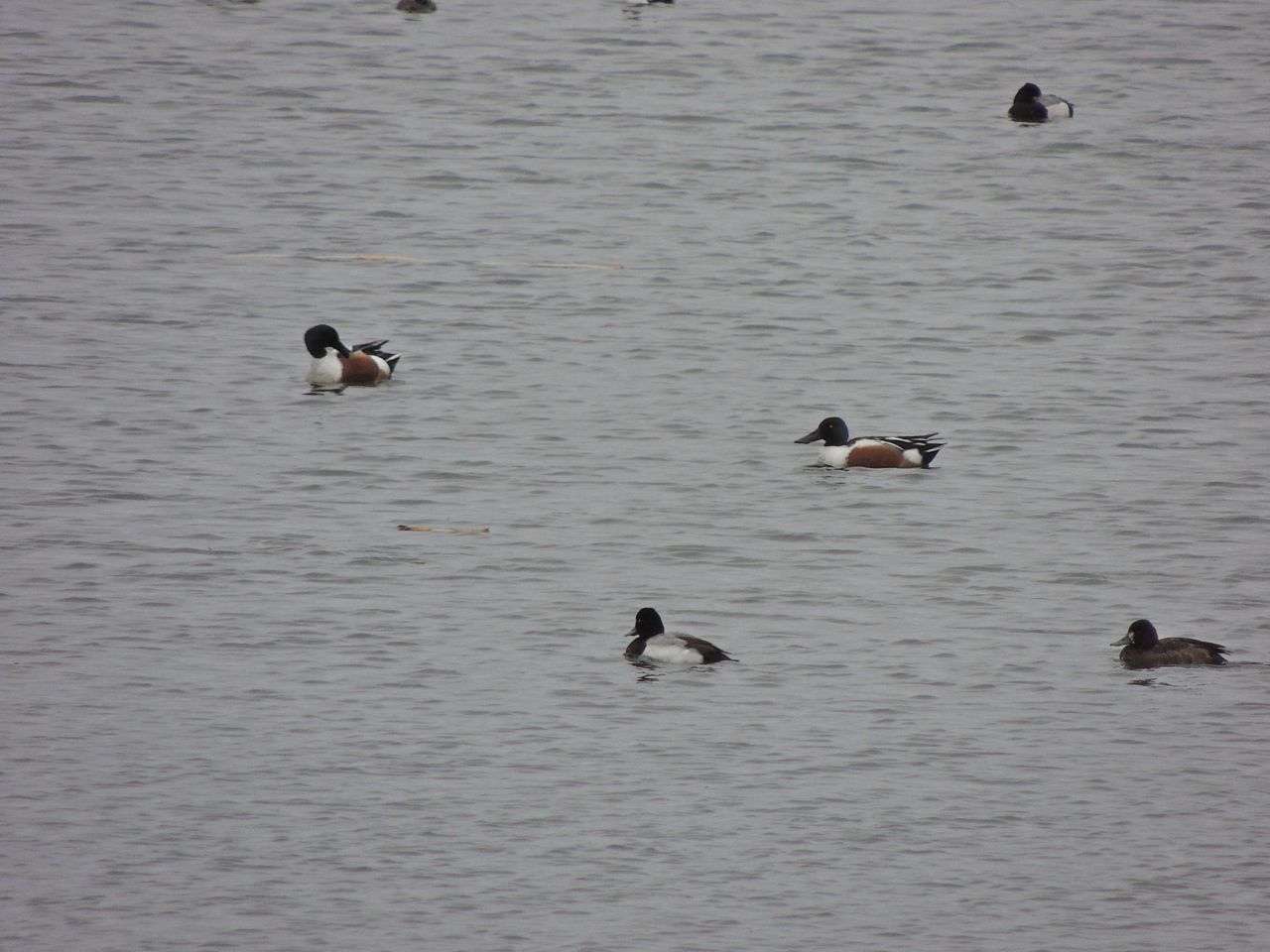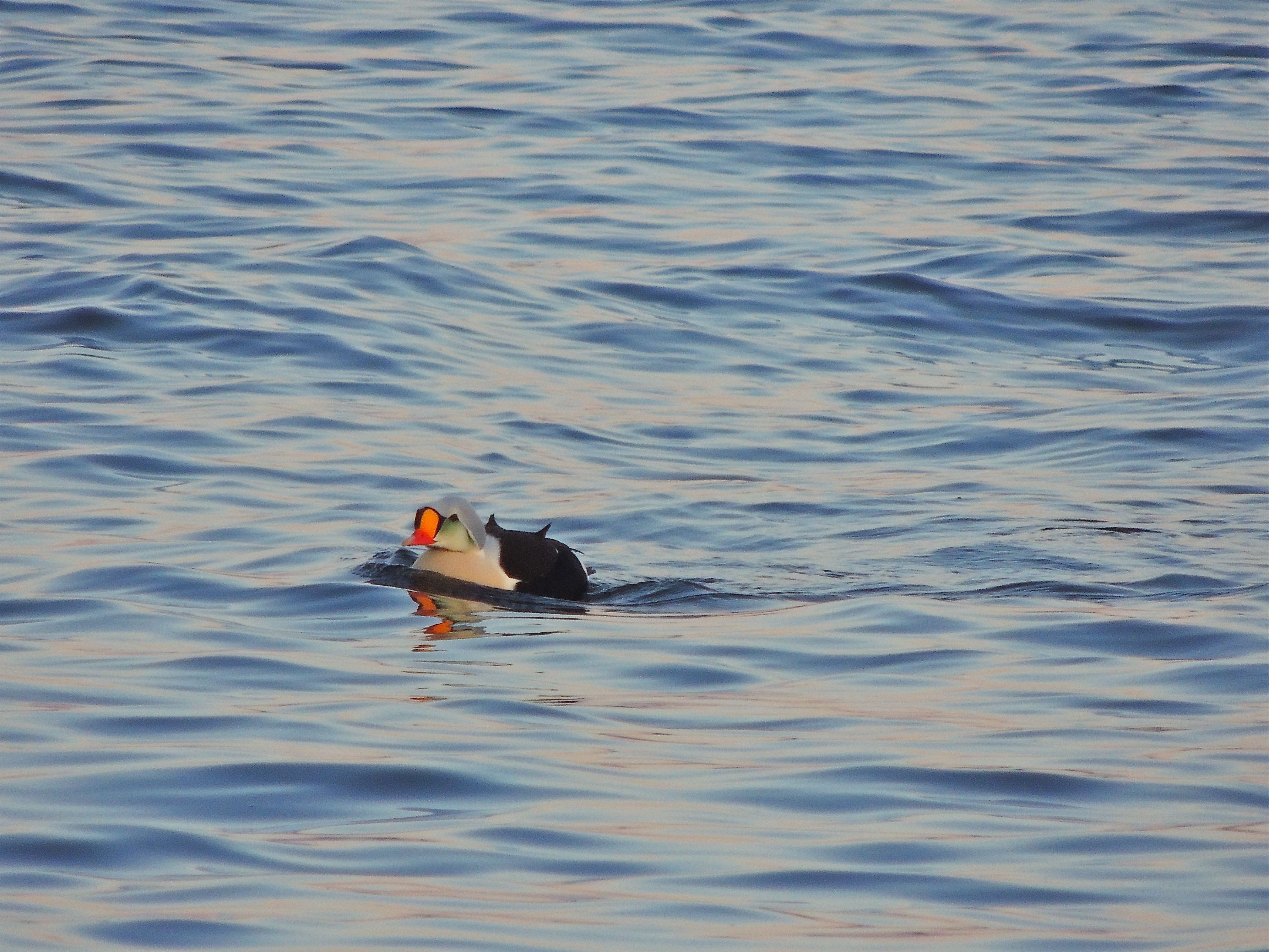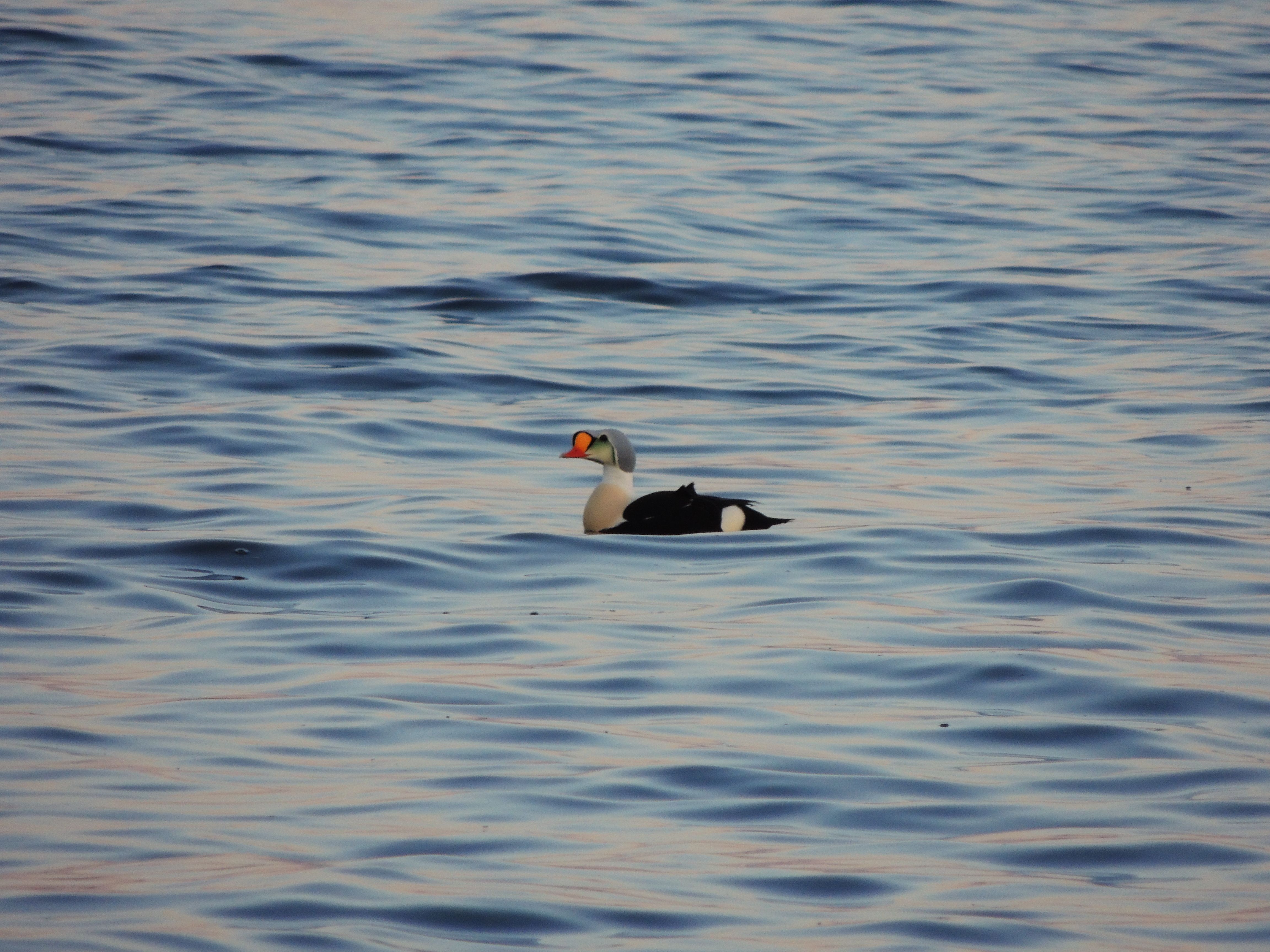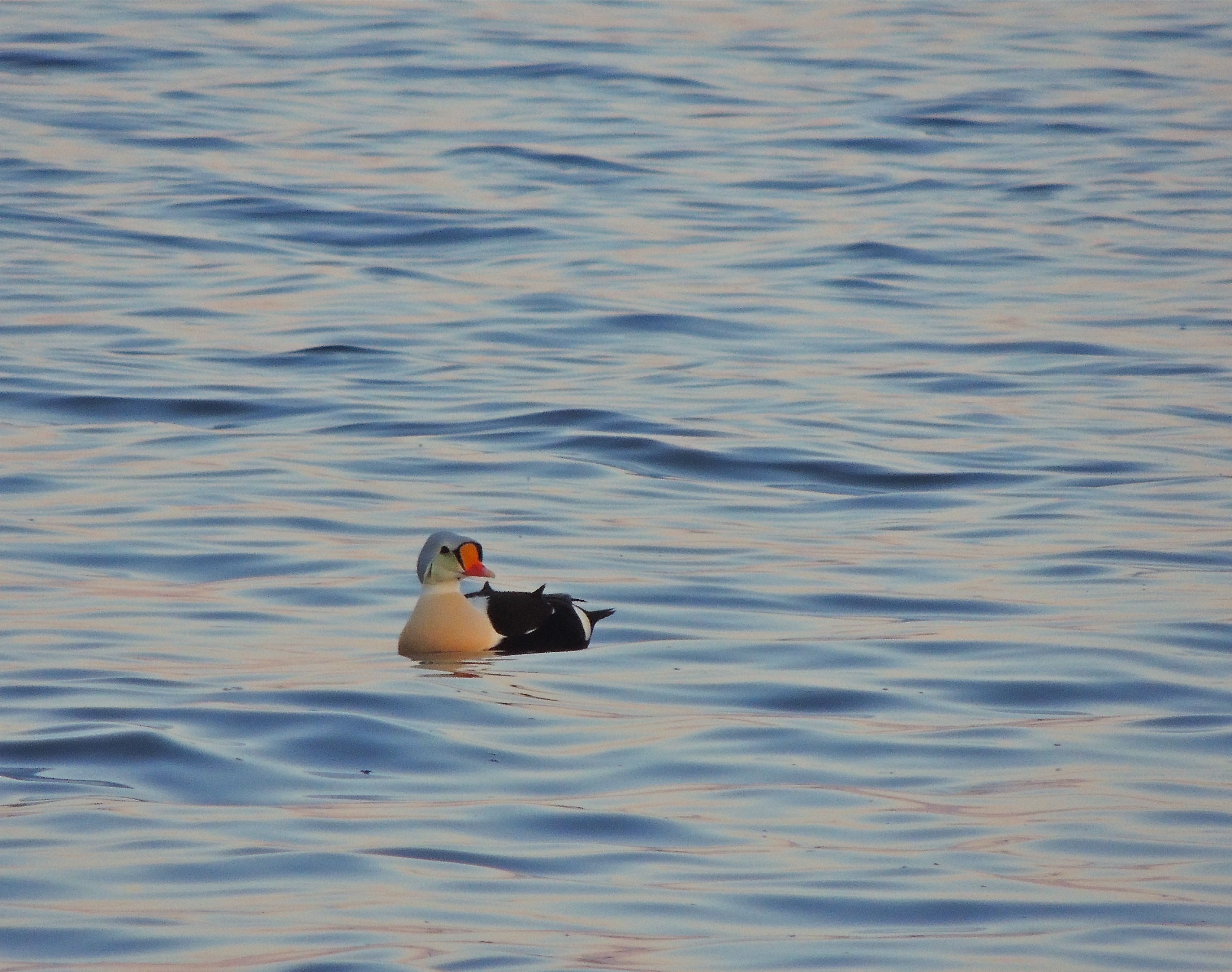6 April 2014. Bronte Harbour ON. This was a day of new(ish) sightings. At the bird observatory, where I have returned to volunteer my time and talents through April & May, a low overhead male Northern Harrier caused a stir, a flock of some 40 or 50 Green-winged Teal circled and dropped down to the river, apparently just to settle a few squabbles before taking off and continuing upstream. A pair of Ring-necked Ducks watched the teal from a quiet eddy, while over the opposite bank a two-year-old Bald Eagle soared just above the treetops.
In the afternoon I went to the marina, which, just a month ago, had been home to squads of Lesser Scaup, Redheads, White-winged Scoters, Trumpeter Swans and Red-breasted Mergansers. A few of which still remain, but most have moved on making haste to their northern breeding grounds. In their place, Red-necked Grebes and Horned Grebes have arrived. The Horned Grebes still have a long way to go, they nest across much of the north-west of the continent: Manitoba, Saskatchewan, Alberta, British Columbia, Yukon and Alaska. The Red-necked Grebes, some of them at least, will breed right here in the marina on artificial platforms much to the entertainment and pride of local residents. More about them in future weeks I’m sure.
Today’s highlights were the dozen or so Horned Grebes paddling around. They are part way through their spring moult changing from their drab grey/brown winter wear to the flamboyant breeding plumage seen almost complete on most of the birds in these pictures. That head with its extravagant golden ear tufts, blood-red eyes and black chin is almost satanic. The expanse of chestnut down the neck and flanks will fill in as the moult completes. Pete Dunne in his excellent reference book, Pete Dunne’s Essential Field Guide Companion (click here for more) has this to say of the Horned Grebe; “Both males and females in breeding plumage are all dark with a swollen face (the bird looks like it has mumps) and a bright yellow, tightly bound wreath atop the head. From behind, the golden plumes resemble lobes or “horns”. At closer range and in good light the neck is clearly chestnut red.”
I often struggle for just the right adjective to describe an especially head-turning bird; I use elegant quite frequently but somehow don’t see it as quite fitting for the Horned Grebe. Bizarre, no; Flamboyant, yes; Demonic maybe; Fascinating certainly. Enjoy these pictures and decide for yourself.
